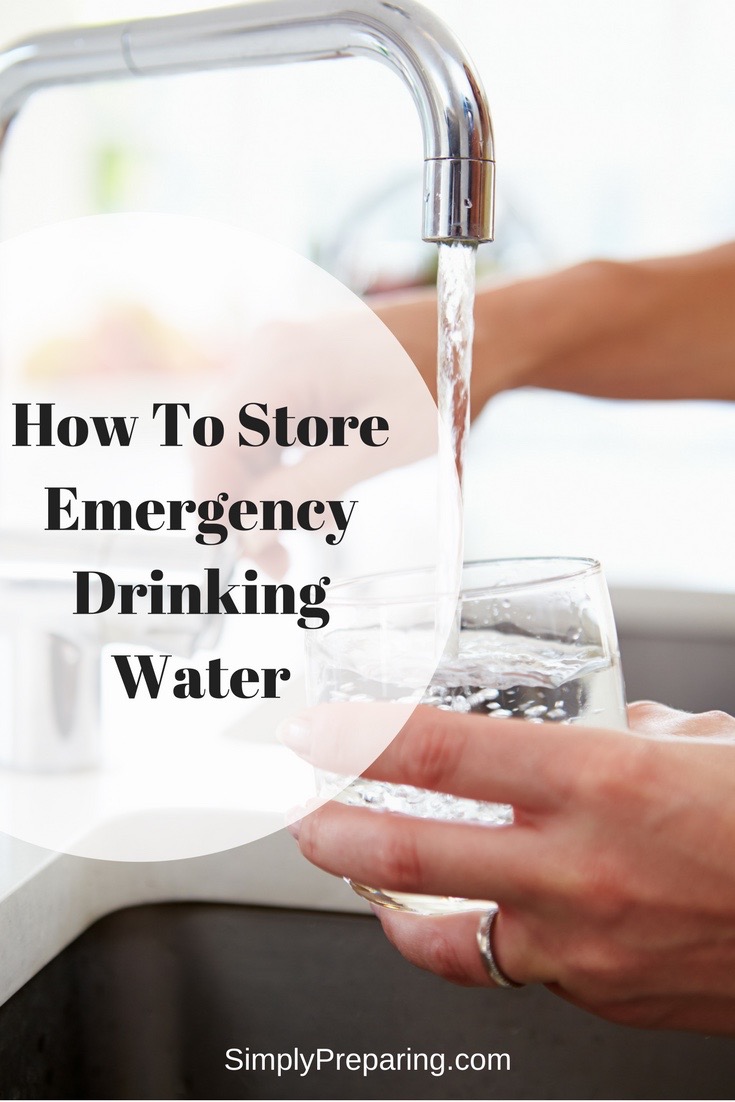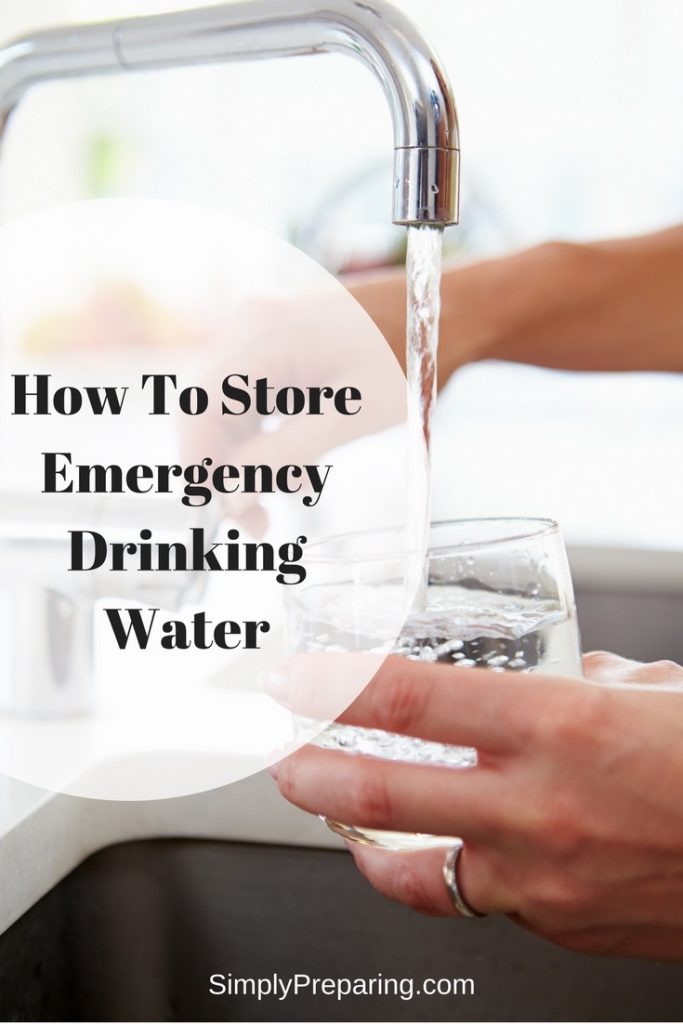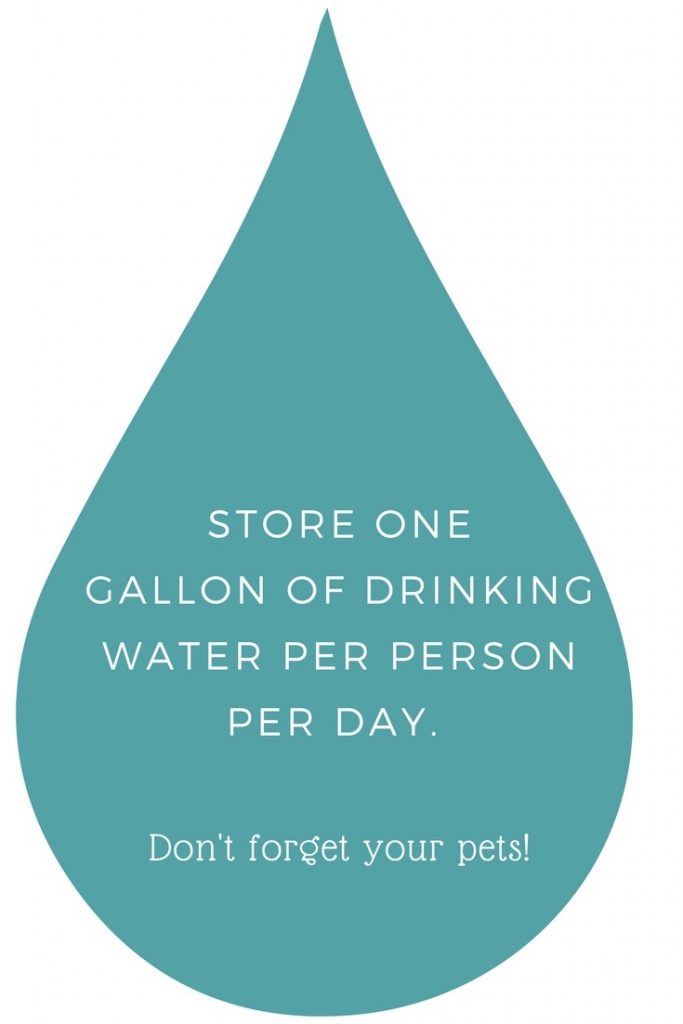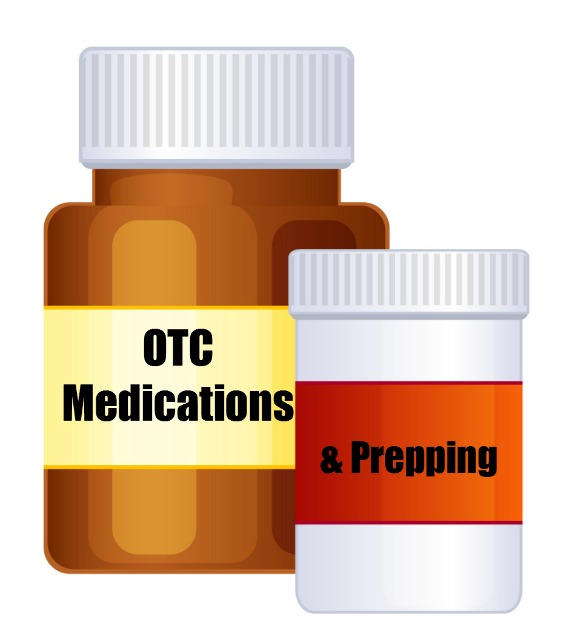Emergency drinking water storage. It’s one of the most important first steps to take in being prepared. If there is a topic I get the most questions about, water storage would rank in the top 10. Let me see if I can answer some of the frequently asked questions and set you on the path for two weeks worth of stored water for you and your family.
How Much Emergency Drinking Water Do You Need?
The general rule of thumb for drinking water storage is one Gallon Of Water Per Person Per Day. We did the math for you a while back to help you figure out how much emergency water your family needs if you are just getting started.
If you live in a hot climate, you’ll want to think about storing 2 gallons of water per person per day. And don’t forget your pets. They need emergency drinking water too.
Remember, this is just water for consumption. If you need to clean, or need water to flush a toilet, you’ll need more than this.
Storing Water in Plastic Containers.
You can safely store water in BPA Free Plastic. Make sure any plastic you choose to store water in is Food Grade Plastic, sterilized and stored out of direct light in a climate controlled area of your home.
The humble 2 liter soda bottle or juice bottle is a good option for budget Preppers. Easy to store, basically free, and good to grab with your 72 hour Kits to head to your Safe Room as part of your Tornado Survival Checklist For Families.
The flip side of storing water in recycled plastic bottles includes the necessity of rotating your 2 liter bottles every 6 months to a year and concerns of residual bacteria if you don’t clean out your bottles well enough.
Remember to clean each container with a weak bleach solution before filling and rotate your water bottle frequently.
Pro Tip: Do NOT store water in empty milk bottle type containers. They WILL leak, creating a mini-flood where your emergency water storage used to be.
Emergency Water Storage In 5 Gallon Containers, Waterbricks and Barrels.
A cheaper alternative is to purchase the *this post contains affiliate links 5 gallon water jugs that are available in camping sections, and in my area, grocery stores.
We’ve boiled our water, added it to the jugs and stored them in our basement. Once filled these jugs are HEAVY and aren’t something you can stack or move around easily. You can find 5 gallon water jugs in stackable versions too. (waterbricks)
Finally, many people choose to store large amounts of water in garages using 55 Gallon Water Drums.
PRO TIP: Add Water Preserver to your 55 Gallons of water to keep it fresh tasting and safe.
Emergency Water Storage: Commercially Bottled Water
Another option is buying bottles of water from the grocery store. Great tasting, easy to rotate (still need to be rotating every 6 to 12 months) and easy to store.
You need to be careful about where you store them as they can freeze and leach chemicals from the plastic into the water in hot weather.
Again, we did the math for you a while back to help you figure out how much emergency water your family needs if you are just getting started.
Other Options For Emergency Drinking Water Storage
I love having options for emergency water storage. I don’t store my emergency water in just one way, I prefer the ‘layered’ approach. Meaning, I have water stored in 5 gallon containers, big blue barrels, water bottles, etc.
Two other ways I have emergency water storage include:
Datrex Emergency Survival Water Pouches I’m a HUGE fan of having these in my 72 Hour Kits. They can mold around other items in my kit. They are a terrific single serving size. If you need to share, it’s easy to give away just one pack of water. And, after they have reached your expiration date, you can still use them for cleaning.
Blue Can – Premium Emergency Drinking Water How about a can of water that lasts FIFTY YEARS? Sign me up! With Blue Can you never have to worry about leaks, or the need to rotate your water storage. One case of water is enough to last one person 4 days.
A terrific addition to your emergency drinking water storage. And, BONUS no BPA worries!
That Wasn’t Hard Now, Was It?
Emergency drinking water storage doesn’t have to be overwhelming. Clean, BPA Free, Food Grade Plastic containers, kept out of direct sunlight, properly rotated.
There! You are one step further to keeping your family safe during an emergency!





 Stocking Up On Over the Counter Medicines
Stocking Up On Over the Counter Medicines »
»
Leave a Reply